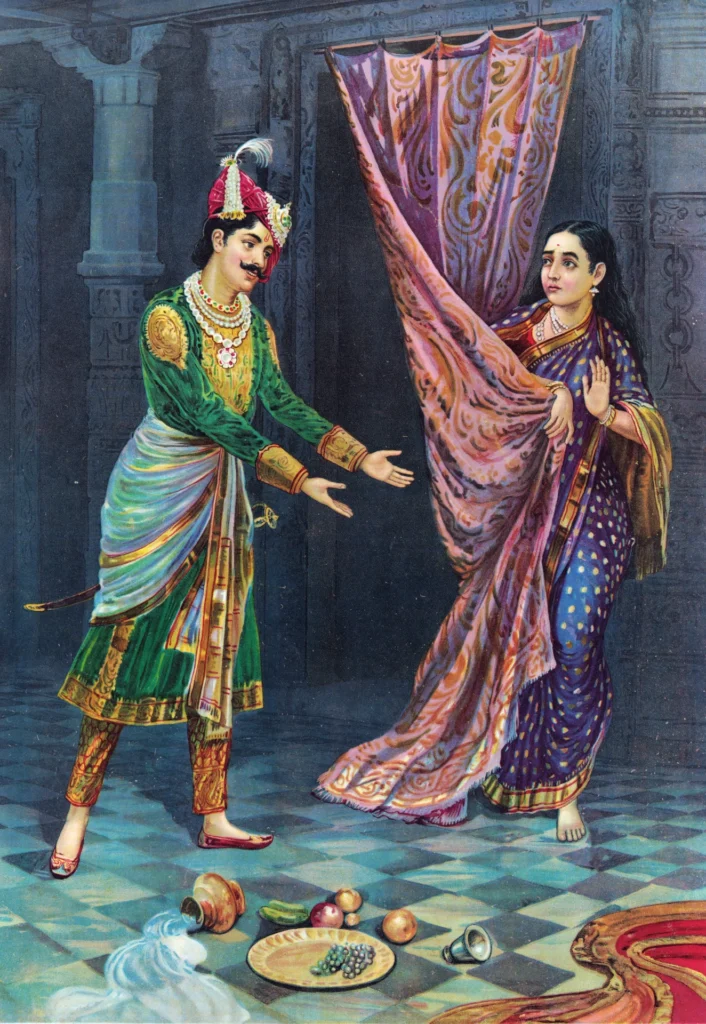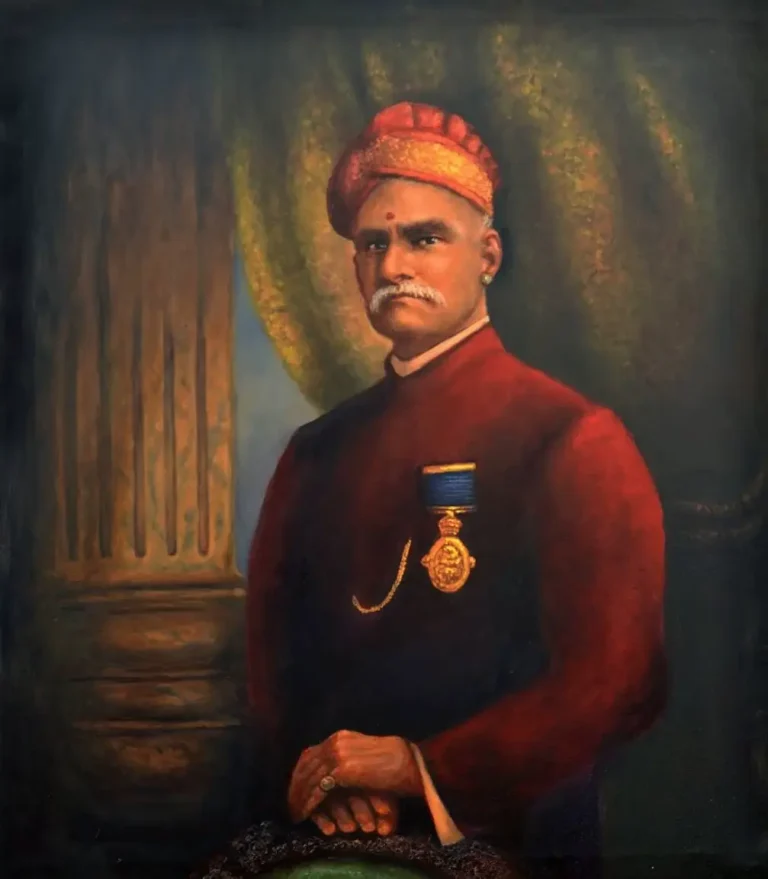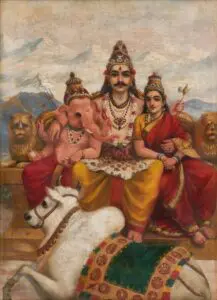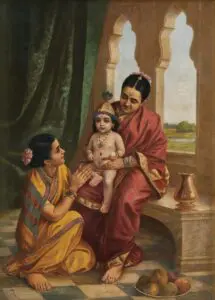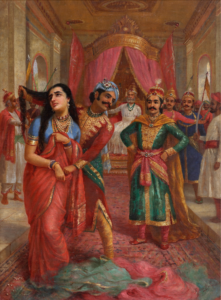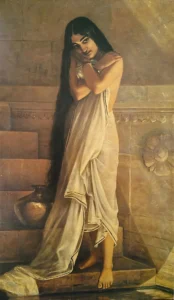Keechaka And Sairandhri
Raja Ravi Varma’s Keechaka And Sairandhri is an evocative oil on canvas painting completed in 1891, depicting an intense moment from the Mahabharata. The work illustrates the confrontation between Keechaka, the lustful brother of Sudeshna, and Sairandhri, who is Draupadi in disguise. The emotional weight of the scene is conveyed through facial expressions, and the fallen tray of fruits symbolizes Sairandhri's resistance. Housed at the Maharaja Fatehsingh Museum, it reflects Varma’s genius in marrying traditional Indian icons with a European style.
Year 1891
About the Artwork
Did You Know
Liked what you see? Add it to your collection.
Enjoyed reading? Share it.
... continued
Subject Matter
The painting depicts a scene from the Hindu epic, the Mahabharata. It shows Keechaka, the brother of Queen Sudeshna, attempting to force himself on Sairandhri, who is actually Draupadi in disguise. The scene captures the moment of Keechaka's lustful advances and Draupadi's resistance, highlighted by the fallen tray of fruits, which adds a dramatic touch to the composition.
Artistic Details
The artwork is an oil on canvas painting, showcasing Raja Ravi Varma's mastery in blending traditional Indian themes with European artistic techniques. The expressions on the faces of the protagonists and the overall composition are notable for their emotional intensity and narrative power.
Historical Context
This painting is one of Varma's more popular works and has been interpreted in various ways, including as a symbol of resistance. For instance, it gained additional significance after a play based on the same theme was banned by the British government, highlighting the rebellious potential of art.
Current Location
The original painting is housed at the Maharaja Fatehsingh Museum in Baroda, India.
Reproductions
The artwork is available in various forms, including oleographs, posters, art prints, and canvas prints, which can be purchased in different sizes and formats, such as rolled, framed, or wrapped.




